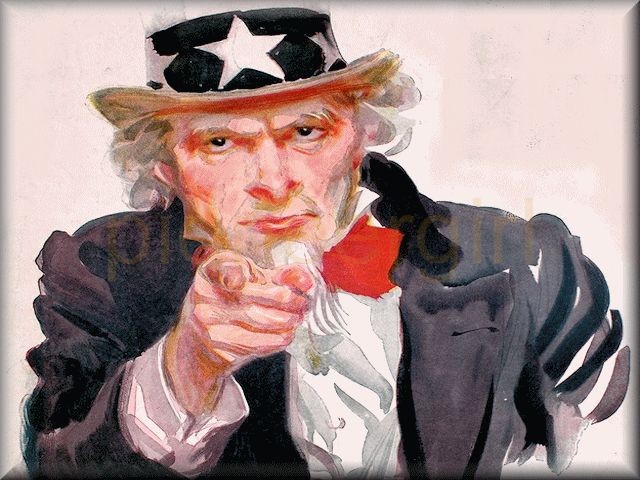Uncle Sam

A cant or vulgar name of the United States government. “Immediately after the last declaration of war with England, Elbert Anderson, of New York, then a contractor, visited Troy, on the Hudson, where was concentrated, and where he purchased, a large quantity of provisions—beef, pork, &c. The inspectors of these articles, at that place, were Messrs. Ebenezer and Samuel Wilson. The latter gentleman (invariably known as ‘Uncle Sam’) generally superintended in person a large number of workmen, who, on this occasion, were employed in overhauling the provisions purchased by the contractor for the army. The casks were marked “E.A.— U.S.” This work fell to the lot of a facetious fellow in the employ of the Messrs. Wilson, who, on being asked by some of this fellow-workmen on the meaning of the mark (for the letters U.S., for United States, were then almost entirely new to them), said ‘he did not know, unless it meant Elbert Anderson and Uncle Sam,’—alluding exclusively, then to the said ‘Uncle Sam’ Wilson. The joke took among the workmen, and passed currently; and ‘Uncle Sam’ himself, being present, was occasionally rallied by them on the increasing extent of his possessions. — Many of these workmen, being of a character denominated ‘food for powder,’ were found, shortly after, following the recruiting drum, and pushing toward the frontier lines, for the double purpose of meeting the enemy and of eating the provisions they had lately labored to put in good order. Their old jokes accompanied them, and before the first campaign ended, this identical one first appeared in print; it gained favor rapidly, till it penetrated, and was recognized, in every part of the country, and will, no doubt, continue so while the United States remain a nation.” — Webster, 1882, attributed to Frost
 Uncle Sam is a figure symbolizing the United States, most often depicted as a white-haired man with a goatee, dressed in a red, white and blue suit and wearing a top hat. It is commonly accepted legend among historians that Uncle Sam is based on a real person, Samuel Wilson, and Congress passed a resolution in 1961 confirming that Wilson was the inspiration for the Uncle Sam symbol. Wilson was born on September 13, 1776 in Arlington, Massachusetts. He and his brother Ebeneezer walked from their childhood home in Mason, New Hampshire, to Troy, New York, in 1789. During the War of 1812, Wilson sold shipments of packed meat to the United States Army in barrels stamped with the initials “U.S.” As a joke, someone suggested that “U.S.” stood for “Uncle Sam,” and the derived association of Uncle Sam with the federal government evolved. Sam Wilson died in Troy, New York in 1854. His appearance does not reflect the popular renderings of Uncle Sam, who was the product of political cartoonists and other artists in the 19th century. The earliest Uncle Sam political cartoon appeared in 1838.
Uncle Sam is a figure symbolizing the United States, most often depicted as a white-haired man with a goatee, dressed in a red, white and blue suit and wearing a top hat. It is commonly accepted legend among historians that Uncle Sam is based on a real person, Samuel Wilson, and Congress passed a resolution in 1961 confirming that Wilson was the inspiration for the Uncle Sam symbol. Wilson was born on September 13, 1776 in Arlington, Massachusetts. He and his brother Ebeneezer walked from their childhood home in Mason, New Hampshire, to Troy, New York, in 1789. During the War of 1812, Wilson sold shipments of packed meat to the United States Army in barrels stamped with the initials “U.S.” As a joke, someone suggested that “U.S.” stood for “Uncle Sam,” and the derived association of Uncle Sam with the federal government evolved. Sam Wilson died in Troy, New York in 1854. His appearance does not reflect the popular renderings of Uncle Sam, who was the product of political cartoonists and other artists in the 19th century. The earliest Uncle Sam political cartoon appeared in 1838.
The illustration is from a Thomas Nast engraving depicting Uncle Sam, Harper’s Weekly (November 24, 1877).

(SSL 1, 7, 25, 29; TLW 10; THGY 16, 28), see also Uncle Sam’s Farm

